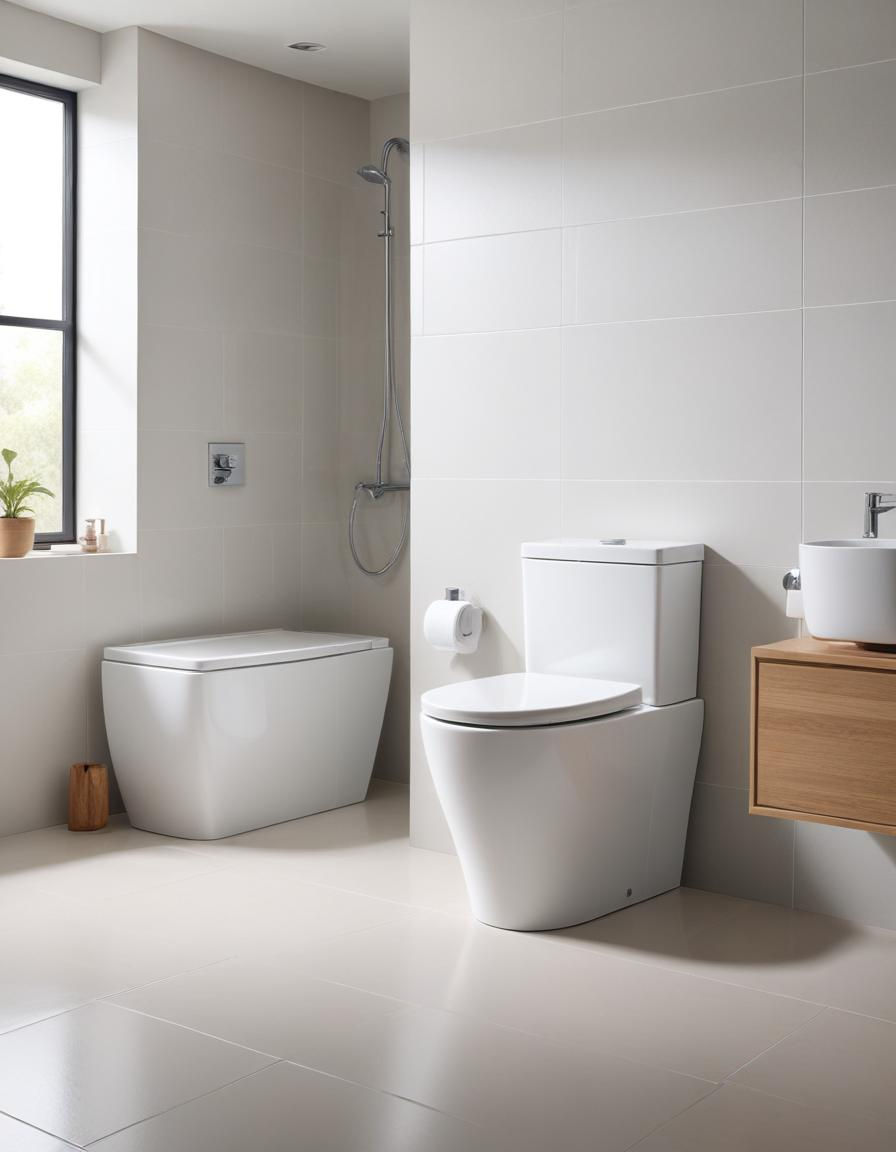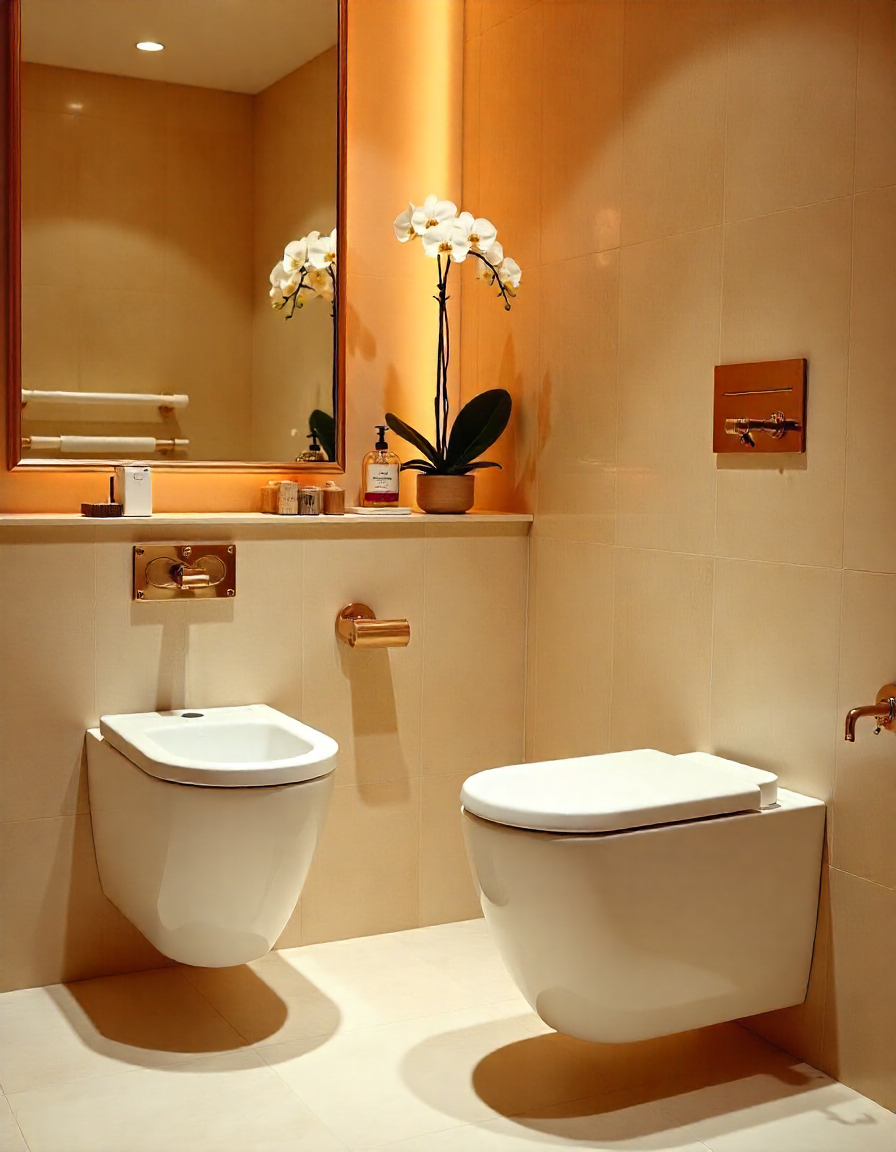Understanding Toilet Flushing Capacity: GPF Ratings, Water Usage, and Choosing the Best Flushing Toilets
- Bath Butler Bidets
- 1 day ago
- 3 min read

Toilets are one of the biggest contributors to household water usage. Surprisingly, nearly 30% of indoor water consumption comes from the lavatory flush. That’s why choosing the right toilet—and understanding toilet flushing capacity—matters more than you might think.
Today’s models focus on efficiency, performance, and long-term cost savings. Whether you're dealing with high water bills or an outdated fixture, evaluating your toilet’s gallons per flush can guide you toward a smarter, more sustainable upgrade.
Why Flushing Capacity Matters
Flushing power and water usage go hand in hand. Older high flow toilet models may use 3.5 to 7 gallons per flush, while newer designs typically use only 1.6 gallons or even as low as 1.28 GPF. This is where knowing your toilet GPF becomes important—it can reveal just how efficient (or wasteful) your toilet really is.
If you're upgrading, many of the best flushing commodes use pressure-assisted or dual-flush systems. These provide strong performance while minimizing water waste.
In fact, you may be wondering: how much does flushing a toilet cost over time? With older units, you're paying for unnecessary water every single flush. Multiply that across a family household, and the yearly costs can add up quickly. Modern toilets are designed to combat this exact problem.
What to Look for in a Modern Toilet
Toilet gallons per flush should be clearly labeled under the tank lid or inside the bowl
Consider models branded as GPF toilet or high-efficiency toilets (HET)
Brands like Toilet Project Source offer budget-friendly models with reliable flush power
Newer toilets also include how much water should be in toilet tank indicators, helping you detect leaks or inefficiencies
The rise of smart toilets has also brought more customization and comfort to the bathroom. These advanced systems combine water-saving features with user-friendly enhancements like heated seats, night lights, and built-in bidets. Explore these upgrades at Bath Butler Bidets.
Frequently Asked Questions About Toilet Flushing
What does “gallons per flush” mean and why is it important?
Gallons per flush (GPF) tells you how much water your toilet uses per flush. Toilets built before the 1990s can use over 3.5 gallons, while modern versions average 1.28–1.6 gallons. GPF helps consumers evaluate water usage and efficiency. Toilets with lower GPF ratings are typically more eco-friendly and cost-effective over time.
How many gallons to flush a toilet?
Typically, modern toilets use 1.28–1.6 gallons. Older models might use up to 7 gallons. If you're asking "how many gallons to flush a toilet," check the stamp under your tank lid or on the bowl rim.
How much does a toilet flush cost?
How much does a toilet flush cost depends on your toilet’s GPF and your local water rates. On average, each flush costs about 1.3 to 2.5 cents. Over time, this adds up—especially with high-usage households. If each flush costs around 2 cents and a family of four flushes 15–20 times a day, that's over $100 per year. Switching to low-GPF models can cut this cost significantly.
What is a toilet flush toilet?
A toilet flush toilet is a traditional model using gravity or pressure-assisted flushing. These are the most common types found in homes today.
What is a lavatory flush?
Lavatory flush simply refers to the flushing action in any bathroom toilet. Whether smart or manual, the key difference is how much water each flush uses.
What is a g toilet 5.0?
A g toilet 5.0 likely refers to older toilets that used 5 gallons per flush. These are outdated and highly inefficient compared to today’s options.
What is flushing commode vs. modern toilet?
A flushing commode generally refers to older toilet styles with larger tanks and higher GPF. Modern toilets focus on streamlined design, efficient flushing, and additional features like bidet attachments.
Final Thoughts
Your toilet is more than just a bathroom necessity—it’s a daily-use appliance that can impact your home’s efficiency, water usage, and utility bills. By understanding specs like toilet gallons per flush, looking out for wasteful models, and choosing efficient alternatives, you can save money while helping the environment.
To explore smart toilets, bidets, and modern water-saving bathroom solutions, visit Bath Butler Bidets and discover the future of bathroom hygiene.




Comments